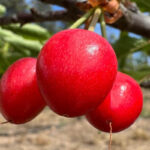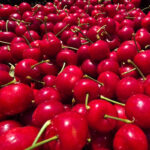Mixed picture for European stone fruit, cherry production

European peach and nectarine production is expected to rise slightly this year, while total cherry production is forecast to decline sharply.
A USDA Gain report pegged the former at 4.1m metric tons (MT), which would be 6.6% higher year-on-year. This is attributed to an increase in most of the major European Union (EU) producing countries supported by favorable weather conditions.
The area planted is anticipated to remain stable at around 222,900 ha.
In 2018-19, the main suppliers of peaches and nectarines to the EU were Chile, South Africa, Turkey and Morocco. EU’s total imports of peaches and nectarines rose 28% to 34,855MT and valued at US$86m.
In 2019-20, EU peaches and nectarines imports are expected to lower due to the forecast higher production.
The EU is a net exporter of peaches and nectarines with exports largely exceeding imports. With lower domestic supplies in 2018-19, the volume of EU’s exports of peaches and nectarines lowered 38% to 155,395 MT and valued at US$141m.
European cherry imports forecast to rise
Total cherry production (sweet and sour, but with sweet making up the majority) is set to fall by 18% to 681,596MT.
The expected strong drop in the major producing countries is due to unfavorable weather conditions during flowering and ripening.
The updated data for total EU cherry planted area is expected to stabilize around 159,800 ha.
The EU is a net importer of cherries sourced mostly from Turkey.
In 2018-19, the EU imported a total of 46,734MT U.S. cherries, valued at US$165m, a 6% year-on-year drop due to higher supply. Imports of cherries may increase In 2019-20 due to lower local production.














































